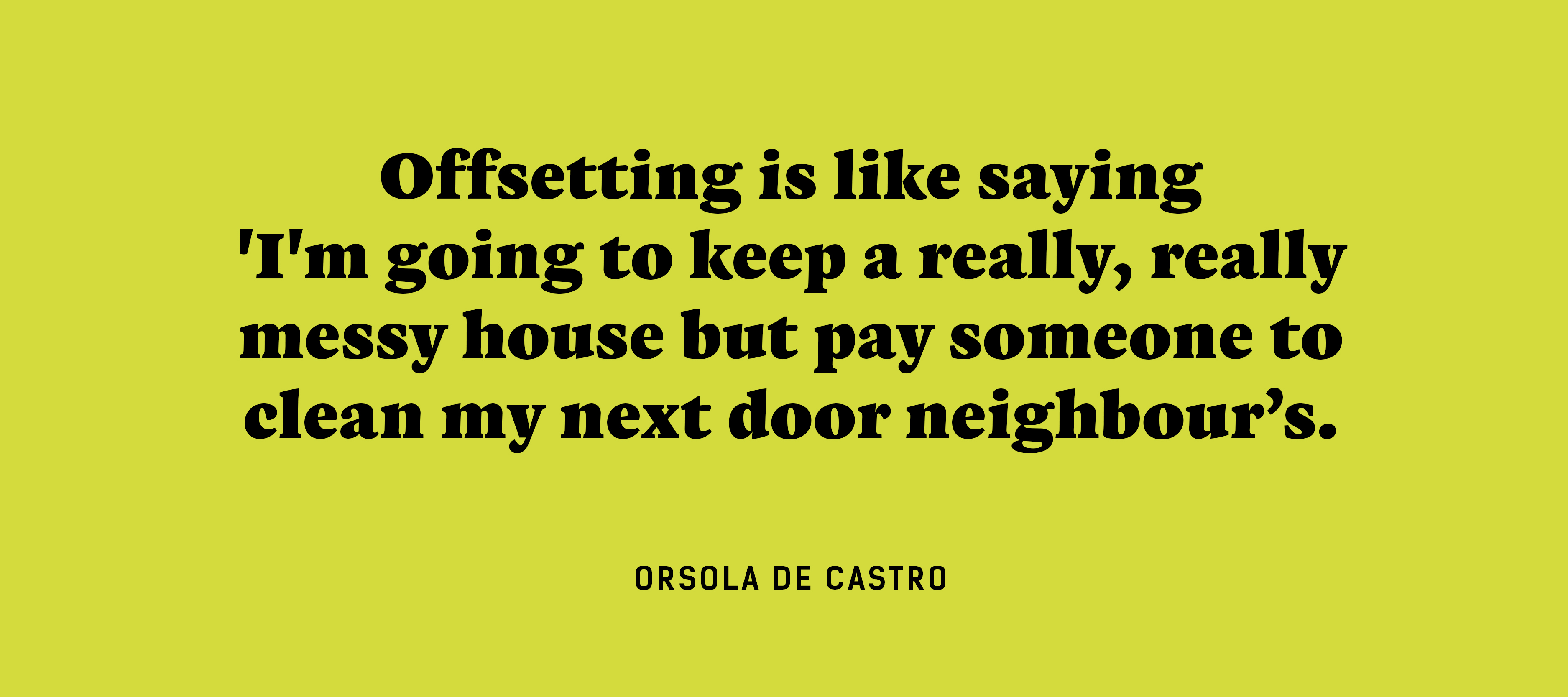Is carbon offsetting the answer?
As carbon emissions are largely to blame for the current climate crisis companies have been under intensifying scrutiny when it comes to their carbon emissions and strategies to reduce them.
Fashion Revolution encourages everyone to clean up their act and be vociferous and transparent about all endeavours undertaken to improve, including offsetting. But we believe offsetting is the end of the journey, in addition to everything else that needs doing in-house, not the first thing to do to embark on a rigorous journey towards lessening impact.
According to Dr. Hakan Karaosman, Supply Chain Sustainability Expert with Specific Experiences on Carbon Footprint at Politecnico di Milano School of Management: “The fashion industry is responsible for over 5 % of the 32 billion tons of global carbon emissions generated in 2015.” Emissions generated by both internal operations and indirect operations throughout the value chain need to be taken into account. However, says Dr. Karaosman, “the majority of the fashion’s carbon footprint is generated by upstream supply chain stages such as raw material production and processing. Thus, strong industrial collaborations are fundamental to collect, analyse and transparently share supplier data, which appear to be an absolute antecedent to holistic reduction pathways.”
It is commendable for a company to be working to understand its impacts and remediate them especially when such actions and commitments set new precedents. As well as offsetting their own emissions they should be driving forward industry best practise.
Ideally, we would see legislation in place to require all companies to take responsibility for their footprints so that we no longer have to rely on individual company efforts to drive the necessary change.
Carbon offset schemes are an increasingly popular tool used by companies to buy carbon credits to balance out their carbon footprint. Carbon credits usually support projects largely across developing countries that are designed to reduce future global carbon emissions. Often through planting new trees and protecting forests or reducing further emissions being produced through human activities such as distributing energy efficient cooking stoves across Africa.
Offsetting itself, and how successful or not it is, is a complex topic requiring scientific analysis to be able to comment on it in much depth but it is important to note that offsetting isn’t actually tackling the reduction of a company’s footprint. It is making the overall global situation ‘less bad’ by ‘doing good’ somewhere else.

A danger with this is that it can send the message that if you have enough money to buy your way out of the damage you are causing you don’t need to take action or act as quickly to change your own practises. This can put the burden on someone else somewhere else to solve the problem, potentially influencing barriers to their own economic growth in the process.
“Fashion companies must create robust strategies to tackle climate change,” says Dr. Karaosman. “First and foremost, companies could Avoid what they can; hence, preventative approaches are wanted. Subsequently, companies could implement practices to Minimise and Reduce emissions directly or indirectly generated by their operations. Therefore, cleaner production strategies, material and process innovation and supply chain integration are central. After undertaking all activities to avoid, minimize, rectify and reduce emissions, Offset could be an option to compensate for the unavoidable emissions of carbon dioxide or other greenhouse gases. Simply, carbon offsetting cannot be considered the ultimate solution to tackle climate change. ”








